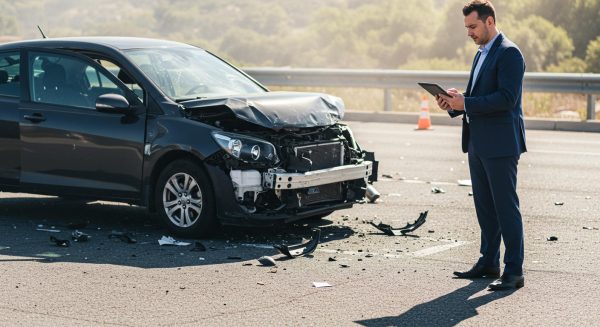As autonomous vehicles are introduced on UK roads, understanding your rights after a self-driving car accident is crucial. The Automated and Electric Vehicles Act 2018 sets out clear guidelines for car accident claims involving these vehicles, with a critical three-year window for taking action.
Understanding Car Accident Injury Claims for Self-Driving Vehicles
Unlike traditional car accident claims, accidents with self-driving cars involve unique considerations. The legislation recognises that when a self-driving vehicle is operating autonomously, the insurer is directly liable for damages—similar to having a designated driver who’s automatically insured for any journey.
The Three-Year Window Explained
After a self-driving car accident, you have three years to initiate your claim. This applies whether you were:
- A passenger in the self-driving vehicle
- A driver or passenger in another vehicle
- A pedestrian or cyclist
- A property owner whose assets were damaged
Think of this time limit like a mobile phone contract—there’s a fixed period during which you need to act, and once it expires, your options become severely limited.
When Does the Clock Start Ticking?

For most self-driving car accident cases, the three-year countdown begins on the day of the incident. However, there are important exceptions:
Hidden Injuries
If you discover injuries later that weren’t immediately apparent after the self-driving car accident, the three-year period might start from your ‘date of knowledge’—when’ you first became aware of the injury and its connection to the accident.
Fatal Accidents
In cases involving fatalities, family members have three years from either the date of death or from discovering the death was linked to the autonomous vehicle accident.
Making Your Car Accident Injury Claim
When pursuing a claim after an accident with a self-driving car, taking prompt action is essential. Here’s why:
Evidence Collection
The sooner you begin your claim, the easier it is to gather crucial evidence. This might include:
- Camera footage from the autonomous vehicle
- Data logs from the self-driving system
- Witness statements
- Road condition reports
- Medical assessments
Insurance Company Response
Insurance companies handling self-driving car accident claims need time to investigate thoroughly. Starting your claim early gives them adequate time while still keeping within the three-year limit.
Special Circumstances in Self-Driving Car Accidents
Due to the advanced technology involved, accidents with self-driving cars often require specialised investigation. The three-year limit takes into account the time needed to:
- Analyse technical data from the vehicle
- Assess whether the autonomous system was functioning correctly
- Determine liability between the manufacturer and insurer
- Evaluate any contributing factors
Protecting Your Rights After a Self-Driving Car Accident
If you’re involved in an accident with a self-driving car, take these immediate steps:
1. Document everything thoroughly.
2. Seek medical attention even for minor injuries.
3. Report the incident to relevant authorities.
4. Contact the vehicle’s insurer
5. Consider seeking legal advice.
Future Considerations
With the UK government predicting significant growth in autonomous vehicle adoption, understanding your rights regarding self-driving car accident claims becomes increasingly important. The three-year rule balances giving claimants adequate time while ensuring claims are handled promptly and efficiently.
Remember, while you have three years to make your claim, starting the process early gives you the best chance of a successful outcome. Don’t let the seemingly generous timeframe lull you into a false sense of security—when it comes to car accident claims involving autonomous vehicles, prompt action is your best ally.
